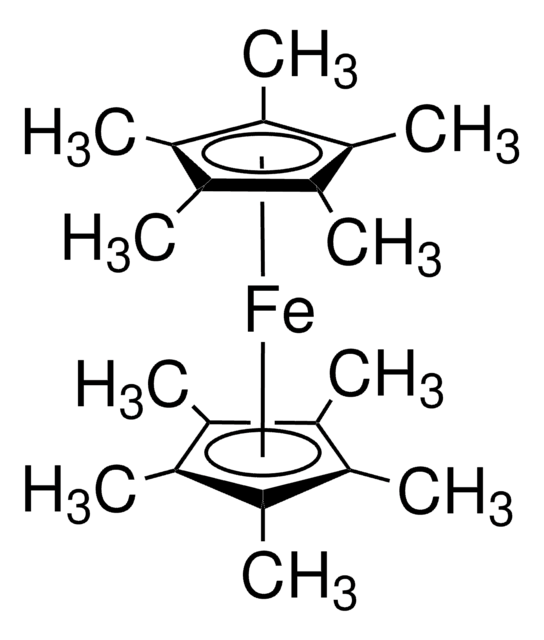401781
Bis(pentamethylcyclopentadienyl)cobalt(II)
Synonym(s):
CoCp*2, Decamethylcobaltocene
About This Item
Recommended Products
form
solid
reaction suitability
core: cobalt
mp
>210 °C (lit.)
storage temp.
2-8°C
SMILES string
[Co].C[C]1[C](C)[C](C)[C](C)[C]1C.C[C]2[C](C)[C](C)[C](C)[C]2C
InChI
1S/2C10H15.Co/c2*1-6-7(2)9(4)10(5)8(6)3;/h2*1-5H3;
InChI key
XDHJNPINFJSJJB-UHFFFAOYSA-N
Related Categories
General description
Application
- An n-type dopant to fabricate organic electronic materials such as copper phthalocyanine thin films.
- A reducing agent to synthesize high-quality reduced graphene oxide thin films at room temperature.
- A metal organic precursor for plasma-enhanced atomic layer deposition of cobalt.
Storage Class Code
11 - Combustible Solids
WGK
WGK 3
Flash Point(F)
Not applicable
Flash Point(C)
Not applicable
Personal Protective Equipment
Certificates of Analysis (COA)
Search for Certificates of Analysis (COA) by entering the products Lot/Batch Number. Lot and Batch Numbers can be found on a product’s label following the words ‘Lot’ or ‘Batch’.
Already Own This Product?
Find documentation for the products that you have recently purchased in the Document Library.
Articles
Highly reducing or oxidizing species enhance organic semiconductor conductivity by reducing charge-carrier injection barriers.
Spintronics offer breakthroughs over conventional memory/logic devices with lower power, leakage, saturation, and complexity.
Thin film photovoltaic devices have become increasingly important in efficiently harnessing solar energy to meet consumer demand.
Nanomaterials are considered a route to the innovations required for large-scale implementation of renewable energy technologies in society to make our life sustainable.
Our team of scientists has experience in all areas of research including Life Science, Material Science, Chemical Synthesis, Chromatography, Analytical and many others.
Contact Technical Service








